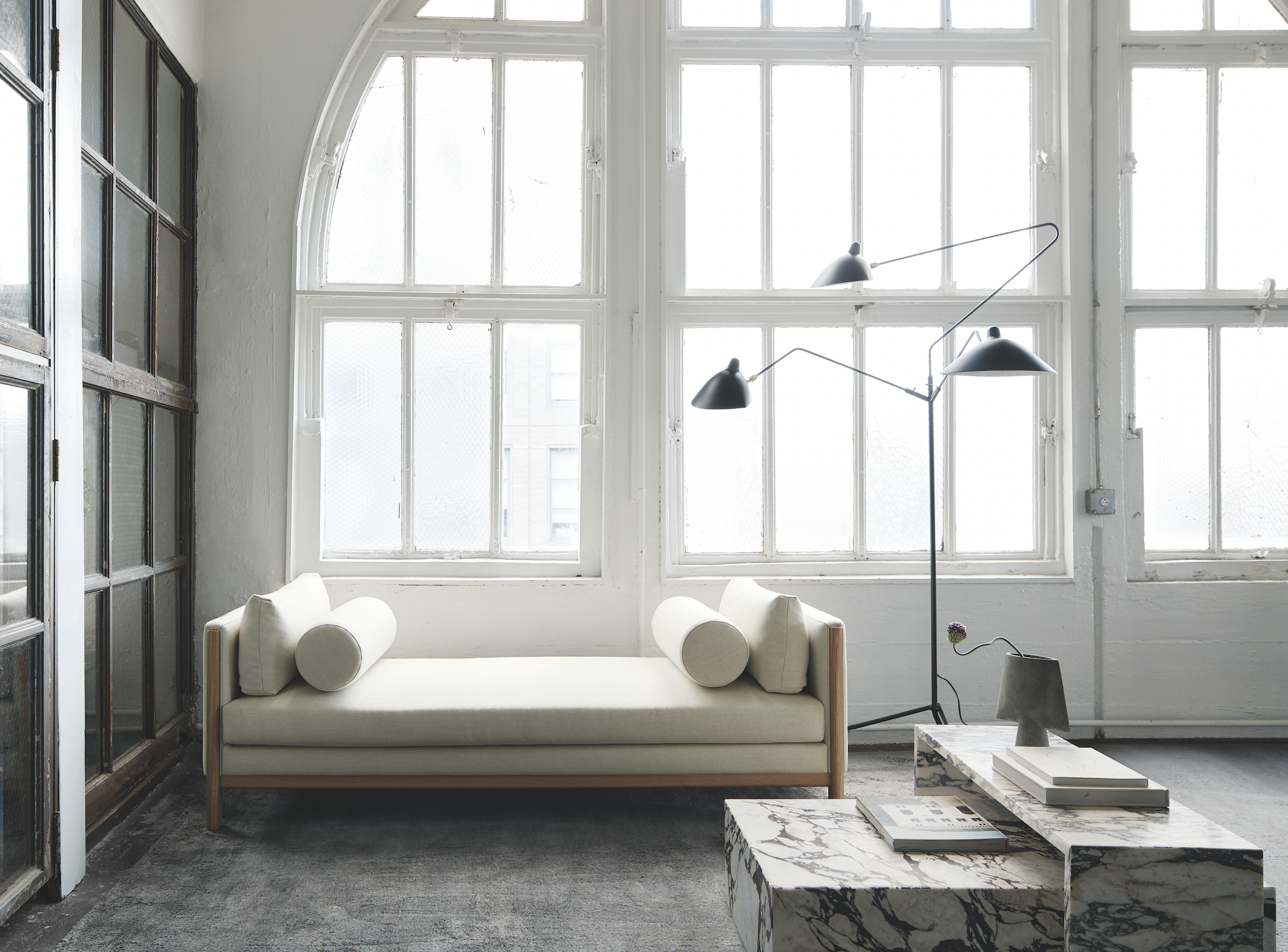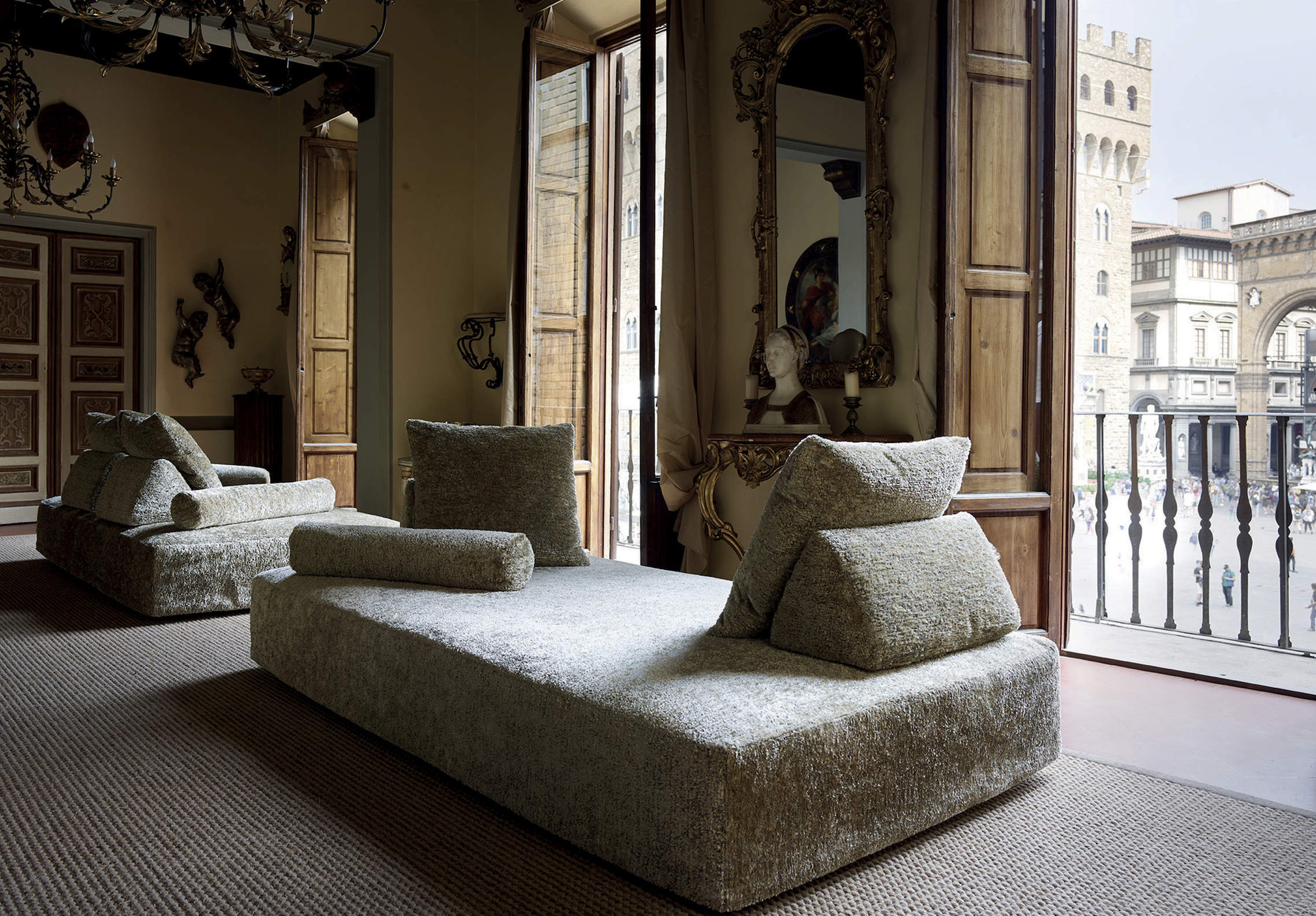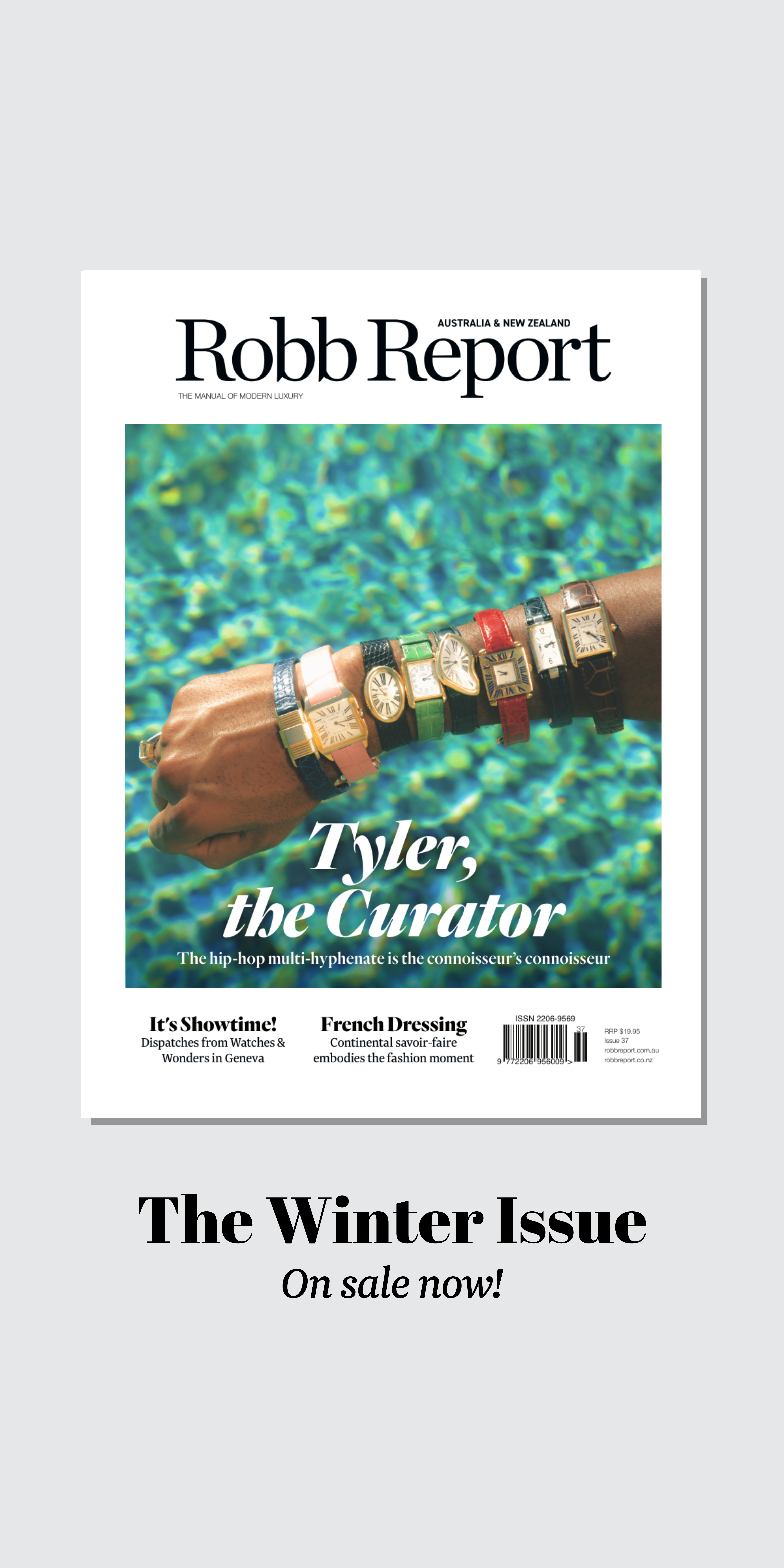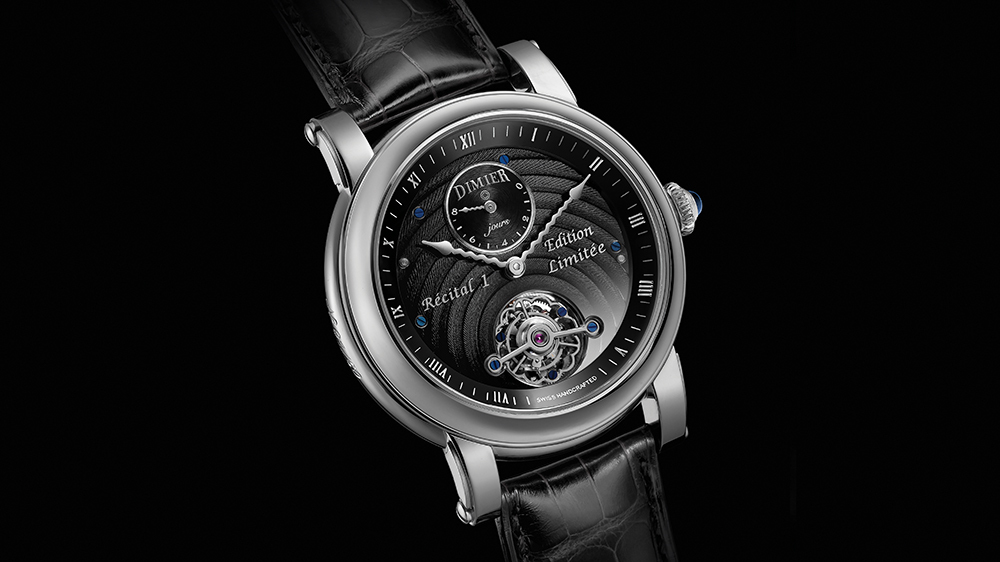
Robb Read: Inside The World Of Bespoke Watchmaking
Why elite collectors often see elements of their supposed one-of-one on someone else’s wrist?
Related articles
“I made the mistake, no one else,” says former Hollywood power agent Michael Ovitz of the several dozen custom watches he commissioned from Patek Philippe about six or seven years ago. It was the first time Ovitz, who has been collecting for 35 years, placed a bespoke order, but his goal was ambitious: He requested several different references, each in a variety of metals, with one-of-a-kind dials. “They were terrific,” he says of Patek, “and accommodated everything I wanted.”
His regret is not foreseeing two problems. The first was misunderstanding his own psychology: Too afraid he’d bang up his special treasures by wearing them, he never even took some of them out of the packaging. In hindsight, he says he would stick to one version of each reference. “My second mistake was that I didn’t ask them for an exclusive on the design,” says Ovitz. “So I saw a lot of [Patek] watches showing up with my design, and I didn’t want that. I wanted unique pieces.” (Patek Philippe declined comment, citing clients’ privacy.)
Navigating the pitfalls of the world of bespoke watchmaking can be tricky, even for experienced collectors like Ovitz, who also has a major trove of modern and contemporary art. Commissioning can lead to the ultimate in bragging rights—influence over a genius creator’s oeuvre and legacy—or total dejection. Nearly every luxury firm is capable of taking customisation to the next level for those willing to spend whatever is required, which can run to millions, but when the client’s and the brand’s expectations are not aligned, the project can backfire.

Michael Ovtiz’s custom Patek Philippe Ref. 5004J-027 in yellow gold. Courtesy of Phillips
Ovitz’s response has been to part company with some of the Pateks, recognisable for his “MSO” initials discreetly placed at six o’clock. Several have quietly popped up on the market, both privately and publicly, through notable auction houses. In 2018, his 36mm Ref. 5004J, in 18-carat yellow gold with a perpetual calendar and split-seconds chronograph, fetched about $484,000 at Phillips’s Hong Kong Watch Auction: Seven. A Ref. 3940 in 18-carat rose gold with perpetual calendar and a Ref. 5059 in 18-carat yellow gold with retrograde perpetual calendar were sold through European Watch Company for undisclosed amounts. But despite the less-than-ideal outcome with his initial foray into bespoke, Ovitz says he has not soured on the concept. Asked if he’d try again, he replies, “Yes, but one-offs that I co-design and that are not duplicated.”
That can be easier said than done. Across the industry, this type of project requires not only a significant investment, with a hefty deposit paid upfront—it’s expensive to develop a new complication or rearrange elements on a dial—but also a certain level of blind trust in the watchmaker’s word. In some cases, collectors report having agreed to allow a company to create an ultra-limited handful of slightly tweaked versions of their originals but still ending up feeling burned.

Voutilainen Observatoire with a Peseux 260 movement inspired by a custom creation for a New York client. Voutilainen
One New York collector, who spoke on the condition of anonymity, recounts how he felt betrayed when a watchmaker began producing more and more pieces with his concept. They had entered into a loose agreement allowing for four additional versions to sell to other clients, which later grew by several and eventually resulted in an ongoing series. “At first, I thought it didn’t matter if he increased the production a little bit, because I got the watch that I wanted,” he says. “But the thing is, it was a little bit like pulling teeth to try to get him to do this thing, and ultimately, it put him on the map, and then he just started cranking them out. I was kind of bummed.” The collector was so disenchanted with his experience that he ended up selling it. The approx. $97,000 price was almost double what he had initially paid, but the piece was the first and last one he bought from that particular maker.
Not every collector minds seeing their ideas on other people’s wrists. The relationship between brand and client can be mutually beneficial. Occasionally, a bespoke commission is so inventive that it wields influence over the brand’s repertoire for years to come. That collector can serve as muse and visionary, investor, guinea pig and sounding board.

An Audemars Piguet VIP client recently requested a prominent minute-repeater slide on his Royal Oak Grande Complication, similar to this one. Diode SA – Denis Hayoun
Take, for instance, Bovet’s Récital timepiece (top image), an ultra-high-complication design that has received multiple accolades, including several Grand Prix d’Horlogerie de Gèneve awards (the GPHG, the highest honour in watchmaking). Its origins date to 2006, when one of the brand’s biggest collectors came to owner Pascal Raffy asking for a tourbillon timepiece that featured a hefty seven days of power reserve along with a crown positioned at three o’clock in a pure and simple design. “He asked me, ‘How do you imagine the dial?’” says Raffy. “I said, ‘The tourbillon is the tank of the timepiece. It is the power, the energy, the generosity. Extending from its cage, let’s design a beautiful and simple blackened Côtes de Gèneve finishing.’” Together, they gave birth to the first Récital in 2007.
The collector was so pleased with the outcome that he suggested Bovet do other iterations, according to Raffy. The prototype was then presented to select retail partners and VIPs. “We were happy if we could sell a few of them,” says Raffy. “It would be a gift [to us] from the collector. That week, 50 models were sold.” The piece has spawned 22 editions to date and has become one of Bovet’s most recognisable designs.

Watchmaker François-Paul Journe in his atelier. F. P. Journe
Collaborations such as these have sometimes been so crucial they have lifted a watchmaker out of relative obscurity. When Kari Voutilainen ventured out on his own after honing his craft behind the bench under master watchmaker Michel Parmigiani at Parmigiani Fleurier, a single client’s wish propelled him into the spotlight. Before he began making his own movements, a client came to him wanting an old Peseux 260 calibre—an observatory-competition movement used by brands for entries in chronometry competitions—in a time-only watch with straight lugs.
It took a year of negotiating and waiting to source the movement before it was delivered as a unique piece. The collector then brought it to the Besançon Observatory in Besançon, France, to be officially tested and certified as an observatory chronometer. The test goes a step further than the standard COSC certification, widely used in the industry, in that it inspects the entire watch for high-level accuracy rather than just the interior movement. The unusual piece went on to spawn not only a newly established Besançon Observatory chronometer certification but also Voutilainen’s coveted Observatoire series, which now encompasses 50 iterations of the original.

The F. P. Journe Centigraphe was the result of a request from a VIP customer who wanted an exceptional chronograph with three hands. F. P. Journe
The Observatoire is not a singular story at Voutilainen’s workshop; other client requests have spawned series. “It has happened many, many times,” says the watchmaker. “One customer wanted to have a GMT but something a little unusual. He said, ‘Make me a watch where the whole dial is turning at six o’clock. That will be cool because it is like it’s living and changing its face all the time.’” So Voutilainen set about redesigning the second time zone to be replaced with a rotating disc integrated into the small seconds, with an arrow to read the GMT time. After the client shared photos on a watch forum, Voutilainen was inundated with requests. “That was purely the idea of our customer, and actually, I myself didn’t even believe that it could be so successful,” says Voutilainen, who has since produced 25 GMTs with the same function. As for the man who came up with the idea in the first place, he adds, “it wasn’t an issue for the customer at all. He has a unique piece with an engraved dial.”
Duplication is not the only drawback of bespoke commissions that serve as research and development for small independent brands. Allen, a San Francisco collector who spoke on the condition of not using his surname, says that sometimes the complex new technology simply doesn’t work. “We’re basically the beta testers,” he explains. “These are not big manufacturers that are able to do all sorts of testing to make sure they are running smoothly before they deliver them. If there’s a problem, we have to send it back.”

London-based collector Michael Hickcox (left) with a timepiece at the Salon International de la Haute Horlogerie. Ben Gierig
Even at major companies, such as Audemars Piguet, which produces about 40,000 watches a year at its sprawling manufacture in Le Brassus, Switzerland, complex customisations remain rare but influential. Despite making only unique pieces until 1951, the brand says this level of attention is now reserved for the very elite few. “Capacity is always the issue, because of the amount of hand-finishing we do,” says Michael Friedman, head of complications. “It’s a long back-and-forth process, because you still have to keep a balance between the design language of the brand and what the client wants.”
Currently on the docket: a larger, easier-to-activate minute-repeater slide for a client’s Royal Oak Grande Complication. “That’s a cool idea, and it’s something we very well could propose in the future, perhaps not his exact design,” says Friedman. “It’s a customisation which we hadn’t considered yet on the Royal Oak.” But it won’t be as simple to execute as it sounds. The entire piece will have to be re-engineered to adjust the pocket where the lever is activated and still meet its water-resistance standards.
Similarly, Vacheron Constantin—the third member, along with Audemars and Patek, of the “holy trinity,” horology’s anointed crème de la crème—has produced custom pieces for centuries. Its clients, however, usually have high expectations for their commissions to remain singular creations. The company’s Les Cabinotiers atelier builds one-off complications from the ground up for its bespoke watches, many of which remain out of the public eye in private hands.

Voutilainen’s GMT-6 timepiece was based on an original commission from a private client. Voutilainen
But for independents, which lack the infrastructure of vast facilities and armies of employees, the time and resources required to create complex bespoke projects add up to significant investments. To make the math work, they may have little choice but to repeat innovations. In the case of Voutilainen, who makes only about 60 watches a year and is intent on building movements in-house, committing to a one-off piece is an enormous personal sacrifice as well. “The time is missing, but also it’s my personal time,” says Voutilainen, who just bought a new building to expand his workshop and house a few more employees to work on bespoke pieces. “During all these past years, I’ve been doing the casing, finishing of the hands and fabricating some components for the hands myself.” It takes him an entire day to complete one set of hands, meaning he dedicates 50 to 60 days of his year solely to that task. He says he spends more than half his time on the bench, working well into the evenings most days.
As a result, a custom order from an independent can take longer than earning a college degree. Hickcox, the London collector, says he waited five years to receive his customized open-dial Roger W. Smith Series II timepiece after commissioning it in 2012. By the time it was ready, he had lost interest. He had also had some temporary financial reversals and so decided to sell the Series II to dealer Silas Walton, owner of the high-end vintage-watch e-tailer A Collected Man, rather than pay the balance and take delivery. “Silas made sure it went to a deserving client, so Roger was pleased with where it ended up.” (Smith declined to comment on the record.)
Smith makes just 12 watches a year, and they are highly coveted, enabling Hickcox to easily unload his for about 30% more than the roughly $163,000 he says he paid. “It worked out really well from a financial point of view for me, even though I’m not a watch speculator or investor,” says Hickcox.

Collector Gary Getz inspects a watch through a loupe.
The five years Hickcox waited is nothing compared to what some clients with extraordinary wish lists endure. When F. P. Journe revealed his first Centigraphe model in 2008, about a dozen years had elapsed since the initial request from a mathematician, who had come to him asking for an exceptional chronograph with three hands: The first would make one revolution in a second, another would turn in 20 seconds and a third would do a 360 every 10 minutes. “I could never figure out how to do it,” Journe says, “until one day, I visited the Scuderia Ferrari, where I finally figured out how to have three hands turning at three different speeds.” The client passed away long before he could ever see his concept come to fruition.
Journe is notorious for doing as he pleases. He works on his own clock, so to speak, and often declines projects he considers beneath him. Rushing to find a solution simply to satisfy an impatient client is not an option, and he will never build a watch by adding complications or modules on top of a basic movement. “It’s too easy,” says Journe. “It’s like cars built with these communal platforms. That’s called industry, and that is not the kind of work I do. I always do what I want. Very often I refuse absurd requests or things I do not find interesting.”

Getz gave design input for this Petermann Bédat Dead Beat Second watch. Petermann Bédat
The right of refusal remains firmly in the hands of the maker, a power imbalance that can surprise some collectors, who tend to be accustomed to getting their own way in life. Even an offhand comment about where you plan to wear your six- or seven-figure watch could land your project dead in the water. Bovet’s Raffy recalls a time in 2013 when he had agreed to create a bespoke minute-repeater tourbillon for a client, which, in addition to its haute horlogerie mechanics, would feature hand-engravings and an enamel painting. But the collector made a grave mistake when he informed Raffy he was going to be very proud to take it swimming in his balmy locale. Plans for the creation were promptly extinguished. “For me, this is absolutely something you cannot do,” says Raffy. “I said, ‘I’m sorry. I will not do it.’ He thought it was a joke. This gentleman thought I would not refuse an order of two million Swiss francs [about $2.8 million]. I said, ‘Thank you. You have my respect, but this is not the image of the house of Bovet.’”
Questions of aesthetics can also kill a project. Requesting motifs that he considers kitschy is a no-no chez Voutilainen. “I like very classical and technical-looking watches,” he says. You wouldn’t, say, ask Lamborghini to outfit the seats of your Huracán supercar in floral chintz.
Keeping control of the visual design is especially important for independents like Voutilainen, who typically do not or cannot spend a dime on marketing. Collectors act as walking advertisements. But that’s not to say watchmakers have a monopoly on visionary ideas. On the contrary, sometimes it’s the companies seeking out the collectors for their ideas and insights. The industry, like most today, relies on social-media influencers, and in some cases, the mutually beneficial relationship has catapulted both watchmaker and collector to rock-star status.

Vienna-based Breitling collector and consultant Fred Mandelbaum. The Image Gate
Silicon Valley collector Gary Getz, who frequently posts about his collection under the Instagram handle @garyg_1 and writes about it regularly on the site Quill & Pad, recalls Petermann Bédat cofounder Gaël Petermann approaching him and a friend at an auction preview in November 2019. “I didn’t know him,” Getz says, “but he recognized me and he asked to show us their watch and asked us for feedback.” Petermann unpacked an early version of his Dead Beat Second, which had a blue dial and gold Roman numerals. Getz, after asking permission to be frank, called the dial “boring” and suggested Petermann add some flare.
Petermann and his partner, Florian Bédat, took the advice to heart. The steel-and-sapphire dial of the finished Dead Beat Second features a cutaway between one and four o’clock that reveals a front-facing glimpse of its manual-winding mechanical movement. In November of 2020, it took home the Horological Revelation prize at the GPHG. Getz didn’t receive a dime for his advice, but Bédat thanked him from the stage. “My friends and I are more than delighted to be asked for our inputs and really pleased to see these independent makers succeed,” Getz says.

The AVI Ref. 765 1953 re-edition Mandelbaum helped conceive for Breitling. Breitling
Status and recognition are significant ego-strokers, but the ultimate accolade is landing a full-time, paid consulting gig. One of the first people Breitling CEO Georges Kern called as he was preparing to take over the brand in 2017 was Vienna collector Fred Mandelbaum, whose popular Instagram account, @watchfred, has 54,000 followers. Not long after, Kern was on a plane to Austria to woo him for an official role. “They call me the guardian of heritage,” says Mandelbaum, who was tapped to help conceive a line of re-editions based on the brand’s vintage models. The new pieces include the Ref. 806 and AVI Ref. 765, both modern replicas of the 1959 and 1953 originals, respectively. He also consults on design generally, when it comes to tapping into the brand’s history. Why? Mandelbaum’s deep knowledge comes in part from the fact that his collection of vintage Breitlings is more extensive than the brand’s own archive. Over the past decade he has acquired one of each “relevant,” as he puts it, Breitling chronograph ever produced. “I think it’s safe to say that my scope of expertise about the brand heritage is something that wasn’t available when Georges took over,” says Mandelbaum. Many of the heritage models referenced on Breitling’s website and in its catalog are in fact his. So far, Mandelbaum has proved his Midas touch. Both re-editions sold out quickly to retailers and distributors, and a third is in the works for this year.
Collaborating at this level is not for novices. It’s a years-long process with serious money at stake on both sides. But when it works, Mandelbaum insists, more than watches are built. “There is a lot of support, goodwill and friendship that evolves in these circles,” he says. “Ultimately, it is a gentleman’s sport.”
Subscribe to the Newsletter
Recommended for you
Watches & Wonders 2024 Showcase: Hermès
We head to Geneva for the Watches & Wonders exhibition; a week-long horological blockbuster featuring the hottest new drops, and no shortage of hype.
By Josh Bozin
July 24, 2024
Watch This Space: Mike Nouveau
Meet the game-changing horological influencers blazing a trail across social media—and doing things their own way.
By Josh Bozin
July 22, 2024
You may also like.
By Josh Bozin
24/07/2024
You may also like.
5 Lounge Chairs That Add Chic Seating to Your Space
Daybeds, the most relaxed of seating solutions, offer a surprising amount of utility.
Chaise longue, daybed, recamier, duchesse brisée—elongated furniture designed for relaxing has a roster of fancy names. While the French royal court of Louis XIV brought such pieces to prominence in fashionable European homes, the general idea has been around far longer: The Egyptian pharaohs were big fans, while daybeds from China’s Ming dynasty spurred all those Hollywood Regency fretwork pieces that still populate Palm Beach living rooms. Even Mies van der Rohe, one of design’s modernist icons, got into the lounge game with his Barcelona couch, a study of line and form that holds up today.
But don’t get caught up in who invented them, or what to call them. Instead, consider their versatility: Backless models are ideal in front of large expanses of glass (imagine lazing on one with an ocean view) or at the foot of a bed, while more structured pieces can transform any corner into a cozy reading nook. Daybeds may be inextricably linked to relaxation, but from a design perspective, they put in serious work.

Emmy, Egg Collective
In designing the Emmy chaise, the Egg Collective trio of Stephanie Beamer, Crystal Ellis and Hillary Petrie, who met as students at Washington University in St. Louis, aimed for versatility. Indeed, the tailored chaise looks equally at home in a glass skyscraper as it does in a turn-of-the-century town house. Combining the elegance of a smooth, solid oak or walnut frame with the comfort of bolsters and cushioned upholstery or leather, it works just as well against a wall or at the heart of a room. From around $7,015; Eggcollective.com
 Plum, Michael Robbins
Plum, Michael Robbins
Woodworker Michael Robbins is the quintessential artisan from New York State’s Hudson Valley in that both his materials and methods pay homage to the area. In fact, he describes his style as “honest, playful, elegant and reflective of the aesthetic of the Hudson Valley surroundings”. Robbins crafts his furniture by hand but allows the wood he uses to help guide the look of a piece. (The studio offers eight standard finishes.) The Plum daybed, brought to life at Robbins’s workshop, exhibits his signature modern rusticity injected with a hint of whimsy thanks to the simplicity of its geometric forms. Around $4,275; MichaelRobbins.com

Kimani, Reda Amalou Design
French architect and designer Reda Amalou acknowledges the challenge of creating standout seating given the number of iconic 20th-century examples already in existence. Still, he persists—and prevails. The Kimani, a bent slash of a daybed in a limited edition of eight pieces, makes a forceful statement. Its leather cushion features a rolled headrest and rhythmic channel stitching reminiscent of that found on the seats of ’70s cars; visually, these elements anchor the slender silhouette atop a patinated bronze base with a sure-handed single line. The result: a seamless contour for the body. Around $33,530; RedaAmalou
Dune, Workshop/APD
From a firm known for crafting subtle but luxurious architecture and interiors, Workshop/APD’s debut furniture collection is on point. Among its offerings is the leather-wrapped Dune daybed. With classical and Art Deco influences, its cylindrical bolsters are a tactile celebration, and the peek of the curved satin-brass base makes for a sensual surprise. Associate principal Andrew Kline notes that the daybed adeptly bridges two seating areas in a roomy living space or can sit, bench-style, at the foot of a bed. From $13,040; Workshop/ APD
Sherazade, Edra
Designed by Francesco Binfaré, this sculptural, minimalist daybed—inspired by the rugs used by Eastern civilizations—allows for complete relaxation. Strength combined with comfort is the name of the game here. The Sherazade’s structure is made from light but sturdy honeycomb wood, while next-gen Gellyfoam and synthetic wadding aid repose. True to Edra’s amorphous design codes, it can switch configurations depending on the user’s mood or needs; for example, the accompanying extra pillows—one rectangular and one cylinder shaped— interchange to become armrests or backrests. From $32,900; Edra
You may also like.
By Josh Bozin
24/07/2024
22/07/2024
Watches & Wonders 2024 Showcase: Hermès
We head to Geneva for the Watches & Wonders exhibition; a week-long horological blockbuster featuring the hottest new drops, and no shortage of hype.
With Watches & Wonders 2024 well and truly behind us, we review some of the novelties Hermès presented at this year’s event.
—
HERMÈS

Moving away from the block colours and sporty aesthetic that has defined Hermès watches in recent years, the biggest news from the French luxury goods company at Watches & Wonders came with the unveiling of its newest collection, the Hermès Cut.
It flaunts a round bezel, but the case middle is nearer to a tonneau shape—a relatively simple design that, despite attracting flak from some watch aficionados, works. While marketed as a “women’s watch”, the Cut has universal appeal thanks to its elegant package and proportions. It moves away from the Maison’s penchant for a style-first product; it’s a watch that tells the time, not a fashion accessory with the ability to tell the time.
Hermès gets the proportions just right thanks to a satin-brushed and polished 36 mm case, PVD-treated Arabic numerals, and clean-cut edges that further accentuate its character. One of the key design elements is the positioning of the crown, boldly sitting at half-past one and embellished with a lacquered or engraved “H”, clearly stamping its originality. The watch is powered by a Hermès Manufacture movement H1912, revealed through its sapphire crystal caseback. In addition to its seamlessly integrated and easy-wearing metal bracelet, the Cut also comes with the option for a range of coloured rubber straps. Together with its clever interchangeable system, it’s a cinch to swap out its look.
It will be interesting to see how the Hermès Cut fares in coming months, particularly as it tries to establish its own identity separate from the more aggressive, but widely popular, Ho8 collection. Either way, the company is now a serious part of the dialogue around the concept of time.
—
Read more about this year’s Watches & Wonders exhibition at robbreport.com.au
You may also like.
22/07/2024
Living La Vida Lagerfeld
The world remembers him for fashion. But as a new tome reveals, the iconoclastic designer is defined as much by extravagant, often fantastical, homes as he is clothes.
“Lives, like novels, are made up of chapters”, the world-renowned bibliophile, Karl Lagerfeld, once observed.
Were a psychological-style novel ever to be written about Karl Lagerfeld’s life, it would no doubt give less narrative weight to the story of his reinvigoration of staid fashion houses like Chloe, Fendi and Chanel than to the underpinning leitmotif of the designer’s constant reinvention of himself.
In a lifetime spanning two centuries, Lagerfeld made and dropped an ever-changing parade of close friends, muses, collaborators and ambiguous lovers, as easily as he changed his clothes, his furniture… even his body. Each chapter of this book would be set against the backdrop of one of his series of apartments, houses and villas, whose often wildly divergent but always ultra-luxurious décor reflected the ever-evolving personas of this compulsively public but ultimately enigmatic man.
With the publication of Karl Lagerfeld: A Life in Houses these wildly disparate but always exquisite interiors are presented for the first time together as a chronological body of work. The book indeed serves as a kind of visual novel, documenting the domestic dreamscapes in which the iconic designer played out his many lives, while also making a strong case that Lagerfeld’s impact on contemporary interior design is just as important, if not more so, than his influence on fashion.

In fact, when the first Lagerfeld interior was featured in a 1968 spread for L’OEil magazine, the editorial describes him merely as a “stylist”. The photographs of the apartment in an 18th-century mansion on rue de Université, show walls lined with plum-coloured rice paper, or lacquered deepest chocolate brown in sharp contrast to crisp, white low ceilings that accentuated the horizontality that was fashionable among the extremely fashionable at the time. Yet amid this setting of aggressively au courant modernism, the anachronistic pops of Art Nouveau and Art Deco objects foreshadow the young Karl’s innate gift for creating strikingly original environments whose harmony is achieved through the deft interplay of contrasting styles and contexts.
Lagerfeld learned early on that presenting himself in a succession of gem-like domestic settings was good for crafting his image. But Lagerfeld’s houses not only provided him with publicity, they also gave him an excuse to indulge in his greatest passion. Shopping!
By 1973, Lagerfeld was living in a new apartment at Place Saint–Sulpice where his acquisition of important Art Deco treasures continued unabated. Now a bearded and muscular disco dandy, he could most often be found in the louche company of the models, starlets and assorted hedonistic beauties that gathered around the flamboyant fashion illustrator Antonio Lopez. Lagerfeld was also in the throes of a hopeless love affair with Jacques de Bascher whose favours he reluctantly shared with his nemesis Yves Saint Laurent.
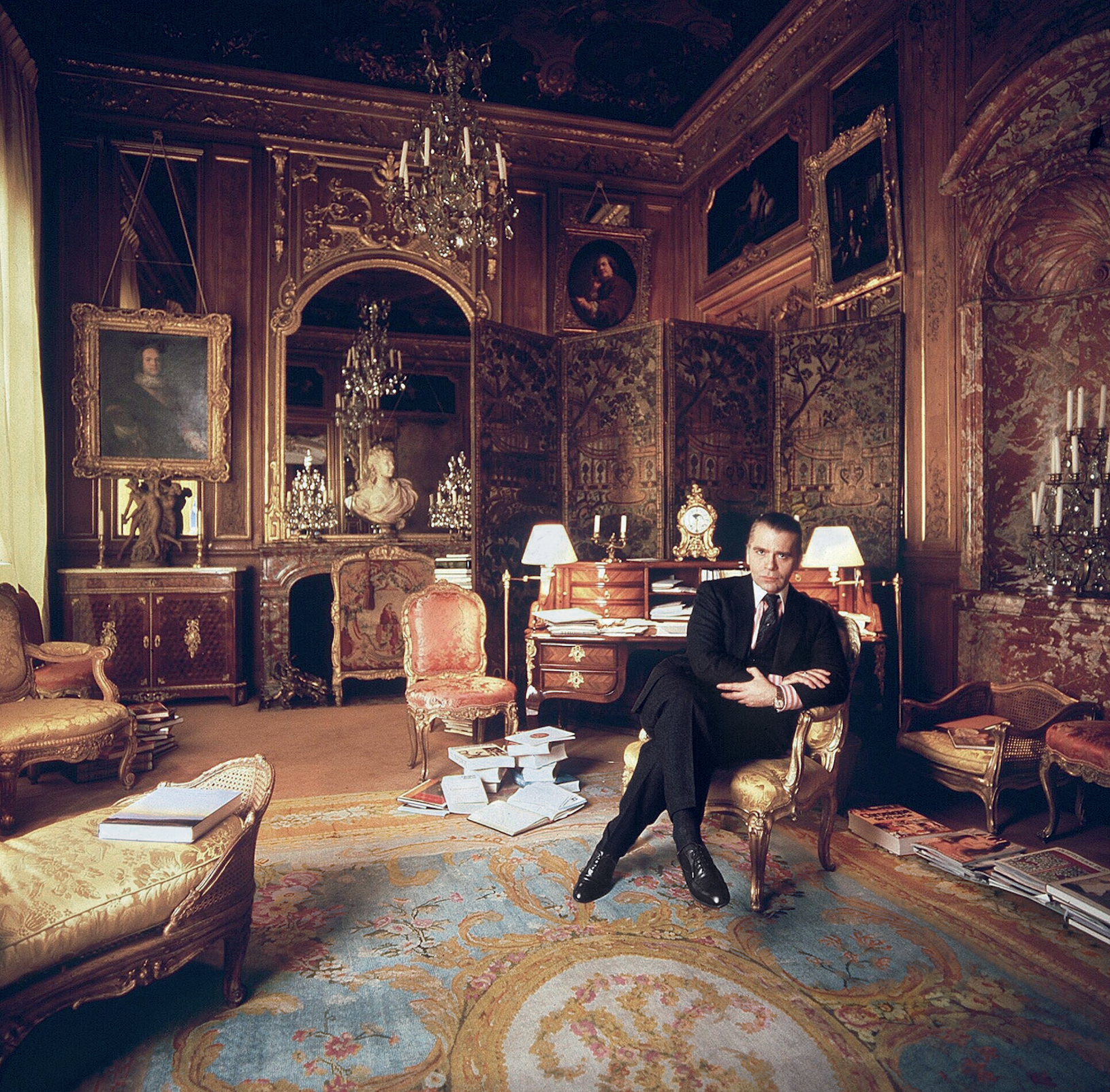
He painted the rooms milky white and lined them with specially commissioned carpets—the tawny patterned striations of which invoked musky wild animal pelts. These lent a stark relief to the sleek, machine-age chrome lines of his Deco furnishings. To contemporary eyes it remains a strikingly original arrangement that subtly conveys the tensions at play in Lagerfeld’s own life: the cocaine fuelled orgies of his lover and friends, hosted in the pristine home of a man who claimed that “a bed is for one person”.
In 1975, a painful falling out with his beloved Jacques, who was descending into the abyss of addiction, saw almost his entire collection of peerless Art Deco furniture, paintings and objects put under the auctioneer’s hammer. This was the first of many auction sales, as he habitually shed the contents of his houses along with whatever incarnation of himself had lived there. Lagerfeld was dispassionate about parting with these precious goods. “It’s collecting that’s fun, not owning,” he said. And the reality for a collector on such a Renaissance scale, is that to continue buying, Lagerfeld had to sell.
Of all his residences, it was the 1977 purchase of Hôtel Pozzo di Borgo, a grand and beautifully preserved 18th-century house, that would finally allow him to fulfill his childhood fantasies of life in the court of Madame de Pompadour. And it was in this aura of Rococó splendour that the fashion designer began to affect, along with his tailored three-piece suits, a courtier’s ponytailed and powdered coif and a coquettish antique fan: marking the beginning of his transformation into a living, breathing global brand that even those with little interest in fashion would immediately recognise.
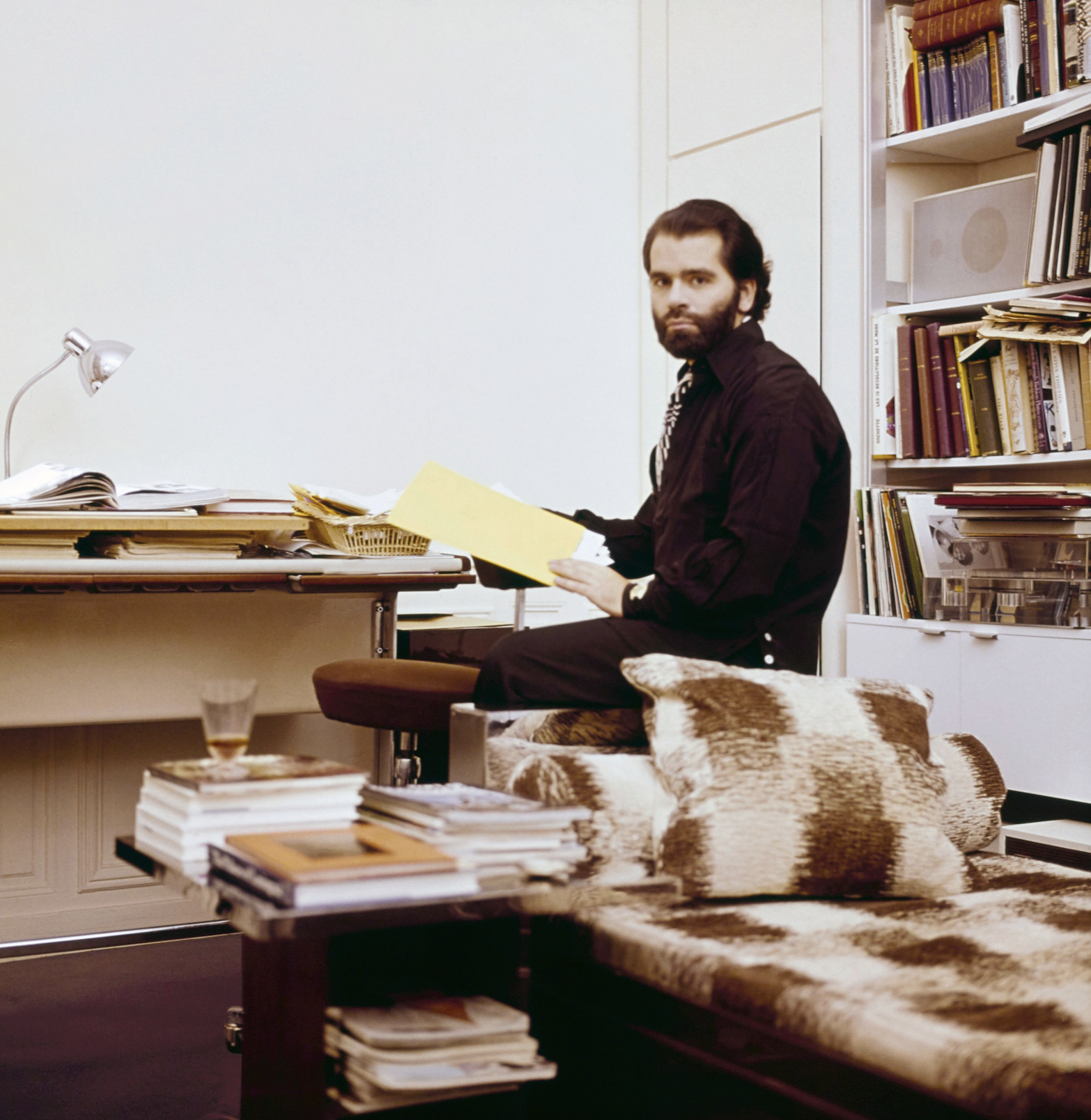
Lagerfeld’s increasing fame and financial success allowed him to indulge in an unprecedented spending frenzy, competing with deep-pocketed institutions like the Louvre to acquire the finest, most pedigreed pearls of the era—voluptuously carved and gilded bergères; ormolu chests; and fleshy, pastel-tinged Fragonard idylls—to adorn his urban palace. His one-time friend André Leon Talley described him in a contemporary article as suffering from “Versailles complex”.
However, in mid-1981, and in response to the election of left-wing president, François Mitterrand, Lagerfeld, with the assistance of his close friend Princess Caroline, became a resident of the tax haven of Monaco. He purchased two apartments on the 21st floor of Le Roccabella, a luxury residential block designed by Gio Ponti. One, in which he kept Jacques de Bascher, with whom he was now reconciled, was decorated in the strict, monochromatic Viennese Secessionist style that had long underpinned his aesthetic vocabulary; the other space, though, was something else entirely, cementing his notoriety as an iconoclastic tastemaker.

Lagerfeld had recently discovered the radically quirky designs of the Memphis Group led by Ettore Sottsass, and bought the collective’s entire first collection and had it shipped to Monaco. In a space with no right angles, these chaotically colourful, geometrically askew pieces—centred on Masanori Umeda’s famous boxing ring—gave visitors the disorientating sensation of having entered a corporeal comic strip. By 1991, the novelty of this jarring postmodern playhouse had inevitably worn thin and once again he sent it all to auction, later telling a journalist that “after a few years it was like living in an old Courrèges. Ha!”

In 1989, de Bascher died of an AIDS-related illness, and while Lagerfeld’s career continued to flourish, emotionally the famously stoic designer was struggling. In 2000, a somewhat corpulent Lagerfeld officially ended his “let them eat cake” years at the Hôtel Pozzo di Borgo, selling its sumptuous antique fittings in a massive headline auction that stretched over three days. As always there were other houses, but now with his longtime companion dead, and his celebrity metastasising making him a target for the paparazzi, he began to look less for exhibition spaces and more for private sanctuaries where he could pursue his endless, often lonely, work.
His next significant house was Villa Jako, named for his lost companion and built in the 1920s in a nouveau riche area of Hamburg close to where he grew up. Lagerfeld shot the advertising campaign for Lagerfeld Jako there—a fragrance created in memorial to de Bascher. The house featured a collection of mainly Scandinavian antiques, marking the aesthetic cusp between Art Nouveau and Art Deco. One of its rooms Lagerfeld decorated based on his remembrances of his childhood nursery. Here, he locked himself away to work—tellingly—on a series of illustrations for the fairy tale, The Emperor’s New Clothes. Villa Jako was a house of deep nostalgia and mourning.
But there were more acts—and more houses—to come in Lagerfeld’s life yet. In November 2000, upon seeing the attenuated tailoring of Hedi Slimane, then head of menswear at Christian Dior, the 135 kg Lagerfeld embarked on a strict dietary regime. Over the next 13 months, he melted into a shadow of his former self. It is this incarnation of Lagerfeld—high white starched collars; Slimane’s skintight suits, and fingerless leather gloves revealing hands bedecked with heavy silver rings—that is immediately recognisable some five years after his death.
The 200-year-old apartment in Quái Voltaire, Paris, was purchased in 2006, and after years of slumber Lagerfeld—a newly awakened Hip Van Winkle—was ready to remake it into his last modernist masterpiece. He designed a unique daylight simulation system that meant the monochromatic space was completely without shadows—and without memory. The walls were frosted and smoked glass, the floors concrete and silicone; and any hint of texture was banned with only shiny, sleek pieces by Marc Newson, Martin Szekely and the Bouroullec Brothers permitted. Few guests were allowed into this monastic environment where Lagerfeld worked, drank endless cans of Diet Coke and communed with Choupette, his beloved Birman cat, and parts of his collection of 300,000 books—one of the largest private collections in the world.

Lagerfeld died in 2019, and the process of dispersing his worldly goods is still ongoing. The Quái Voltaire apartment was sold this year for US$10.8 million (around $16.3 million). Now only the rue de Saint-Peres property remains within the Lagerfeld trust. Purchased after Quái Voltaire to further accommodate more of his books—35,000 were displayed in his studio alone, always stacked horizontally so he could read the titles without straining his neck—and as a place for food preparation as he loathed his primary living space having any trace of cooking smells. Today, the rue de Saint-Peres residence is open to the public as an arts performance space and most fittingly, a library.
You may also like.
By Josh Bozin
24/07/2024
Watch This Space: Mike Nouveau
Meet the game-changing horological influencers blazing a trail across social media—and doing things their own way.
In the thriving world of luxury watches, few people own a space that offers unfiltered digital amplification. And that’s precisely what makes the likes of Brynn Wallner, Teddy Baldassarre, Mike Nouveau and Justin Hast so compelling.
These thought-provoking digital crusaders are now paving the way for the story of watches to be told, and shown, in a new light. Speaking to thousands of followers on the daily—mainly via TikTok, Instagram and YouTube—these progressive commentators represent the new guard of watch pundits. And they’re swaying the opinions, and dollars, of the up-and-coming generations who now represent the target consumer of this booming sector.
—
MIKE NOUVEAU
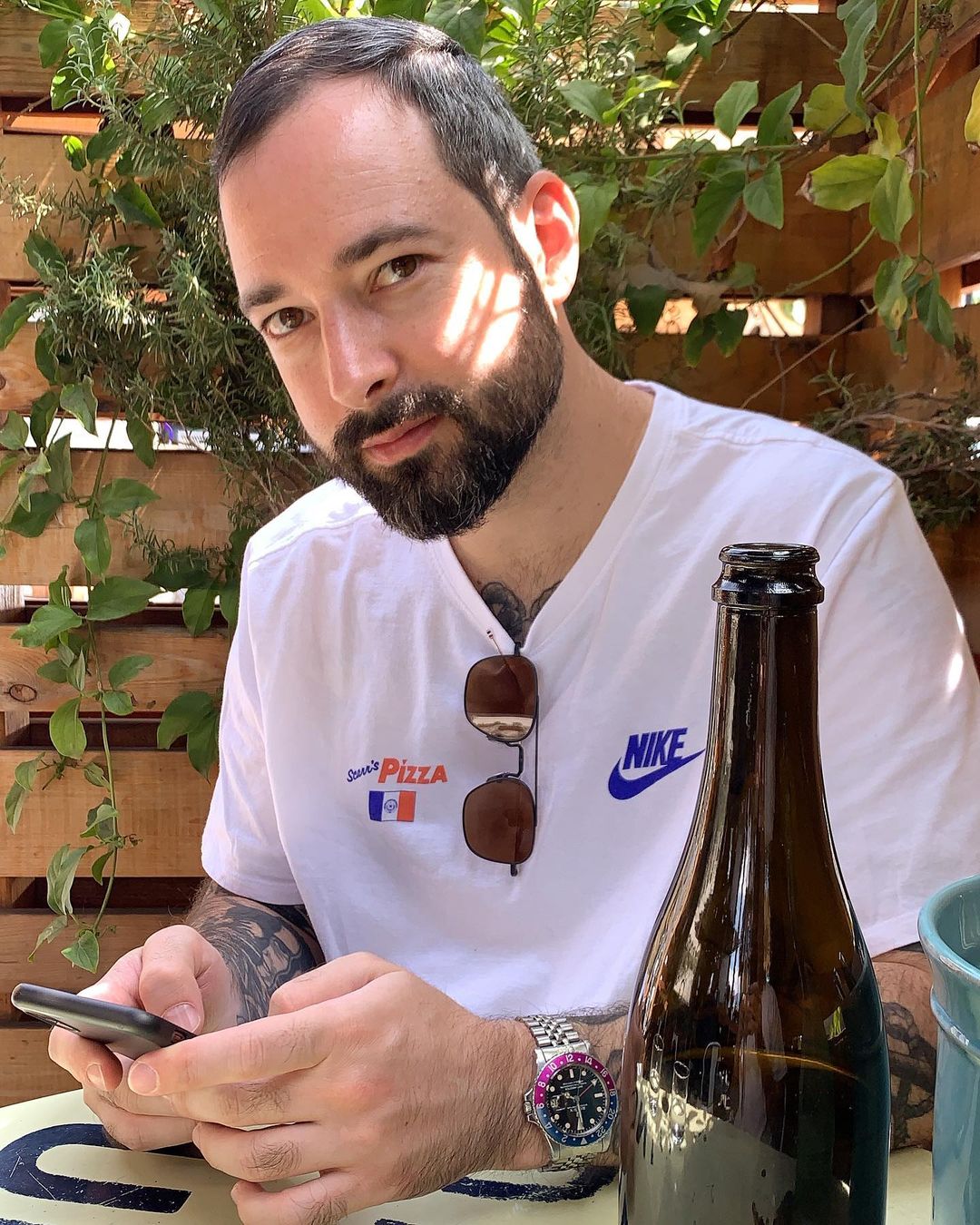
Can we please see what’s on the wrist? That’s the question that catapulted Mike Nouveau into watch stardom, thanks to his penchant for highlighting incredibly rare timepieces across his TikTok account of more than 400,000 followers. When viewing Nouveau’s attention-grabbing video clips—usually shot in a New York City neighbourhood—it’s not uncommon to find him wrist-rolling some of the world’s rarest timepieces, like the million-dollar Cartier Cheich (a clip he posted in May).
But how did someone without any previous watch experience come to amass such a cult following, and in the process gain access to some of the world’s most coveted timepieces? Nouveau admits had been a collector for many years, but moved didn’t move into horology full-time until 2020, when he swapped his DJing career for one as a vintage watch specialist.
“I probably researched for a year before I even bought my first watch,” says Nouveau, alluding to his Rolex GMT Master “Pepsi” ref. 1675 from 1967, a lionised timepiece in the vintage cosmos. “I would see deals arise that I knew were very good, but they weren’t necessarily watches that I wanted to buy myself. I eventually started buying and selling, flipping just for fun because I knew how to spot a good deal.”
Nouveau claims that before launching his TikTok account in the wake of Covid-19, no one in the watch community knew he existed. “There really wasn’t much watch content, if any, on TikTok before I started posting, especially talking about vintage watches. There’s still not that many voices for vintage watches, period,” says Nouveau. “It just so happens that my audience probably skews younger, and I’d say there are just as many young people interested in vintage watches as there are in modern watches.”
View this post on Instagram
Nouveau recently posted a video to his TikTok account revealing that the average price of a watch purchased by Gen Z is now almost US$11,000 (around $16,500), with 41 percent of them coming into possession of a luxury watch in the past 12 months.
“Do as much independent research as you can [when buying],” he advises. “The more you do, the more informed you are and the less likely you are to make a mistake. And don’t bring modern watch expectations to the vintage world because it’s very different. People say, ‘buy the dealer’, but I don’t do that. I trust myself and myself only.”
—
Read more about the influencers shaking up horology here with Justin Hast, Brynn Wallner and Teddy Baldassare.
You may also like.
By Josh Bozin
24/07/2024
This Pristine 1960 Ferrari 250 Spider Could Fetch $24 Million at Auction
The car wears the same colours and has the same engine it left the factory with.
Some Ferraris are just a little bit more important than others.
Take, for example, the 1960 250 GT SWB California that RM Sotheby’s is auctioning off during this year’s Monterey Car Week. Any example of the open-top beauty would attract interest, but this one just so happens to be the first one that was built.
The 250 is one of the most legendary series of cars in Ferrari history. Between 1952 and 1964, the company released 21 different 250 models—seven for racetracks, 14 for public roads—of which the “Cali Spider” might be the most well regarded, thanks to its potent V-12 and a Pininfarina-penned design that is one of the most beautiful bodies to grace an automobile. The roadster, which was specifically built for the U.S., made its debut in 1957 as a long-wheel-base model (LWB), but it wasn’t until the SWB model debut in 1960 that it became clear how special it was. This example isn’t just the first to roll off the line. It’s the actual car that was used to introduce the world to the model at the 1960 Geneva Motor Show.

Just 56 examples of the 250 GT SWB California Spider would be built by Scaglietti during the three years it was in production. The first of those, chassis 1795 GT, is finished in a glossy coat of Grigio. The two-door had a red leather interior at Geneva but was returned to the factory and re-outfitted with black leather upholstery before being delivered to its original owner, British race car driver John Gordon Bennet. Six-and-a-half decades later the car looks identical to how it did when it left the factory the second time.

In addition to its original bodywork, the chassis 1795 GT features its original engine, gearbox, and rear axle. That mill is the competition-spec Tipo 168, a 3.0-litre V-12 that makes 196.1 kW. That may not sound like much by today’s standards, but, when you consider that the 250 GT SWB California Spider tips the scales around 952 kilograms, it’s more than enough.

The first 250 GT SWB California Spider is scheduled to go up for bid during RM Sotheby’s annual Monterey Car Week auction, which runs from Thursday, August 15, to Saturday, August 17. Unsurprisingly, the house has quite high hopes for the car. The car carries an estimate of between $24 million and $26 million, which could make it one of the most expensive cars ever sold at auction.

You may also like.
By Josh Bozin
24/07/2024









